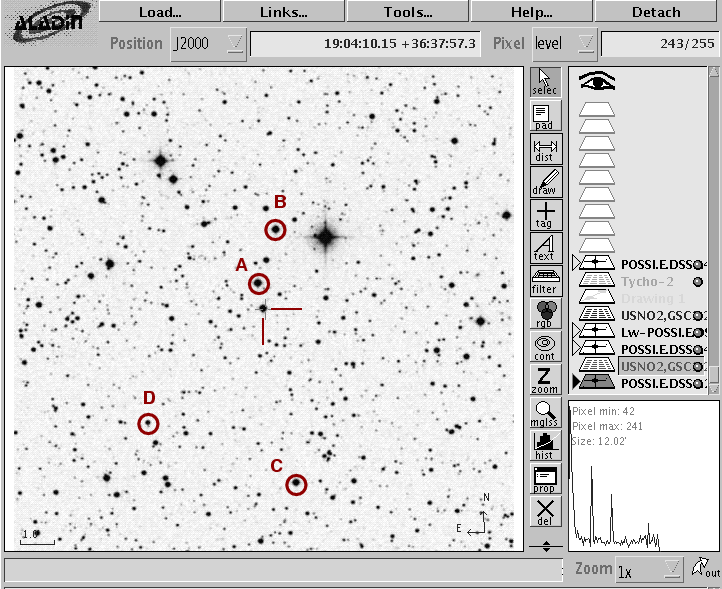
On the night of UT Oct 07, 2007, the SDSS Photometric Telescope ("PT" for short) took a series of exposures of the field around TrES-1 . We caught the entire transit!
Notes from the night
This is a chart of the field. TrES-1 is the bright star indicated by the crosshairs. The labelled stars will appear in later graphs.

The host star of TrES-2 has a magnitude V=11.79, according to TrES-1: The Transiting Planet of a Bright K0V Star.
Following the procedures outlined by Kent Honeycutt's article on inhomogeneous ensemble photometry, I used all stars available in each image to define a reference frame, and measured each star against this frame. You can find the software package used to do the ensemble photometry online; it's free!
The night was clear -- and here's evidence. The graph below shows the amount by which instrumental magnitudes from each image needed to be shifted to match the ensemble reference. On a clear night, this graph would show a straight horizontal line. The total change over the course of the observing run on TrES-1 was only 0.05 mag.
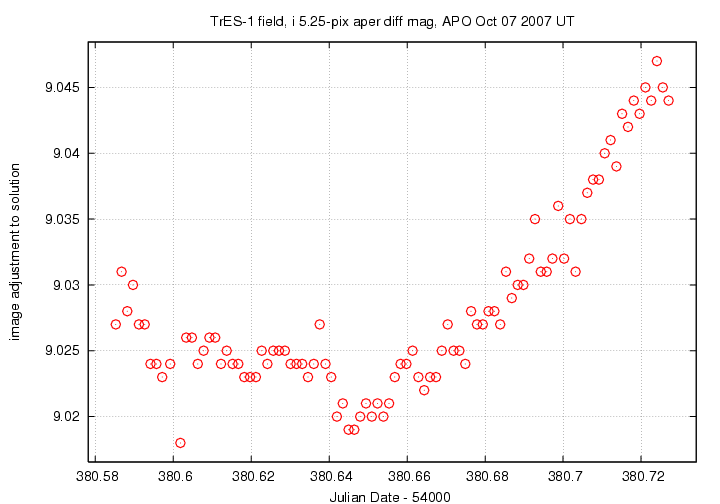
Below is a graph of the scatter in differential magnitude versus magnitude in the ensemble solution. I marked all stars brighter than differential magnitude 2.0, as "saturated," so that they would not influence the ensemble solution.
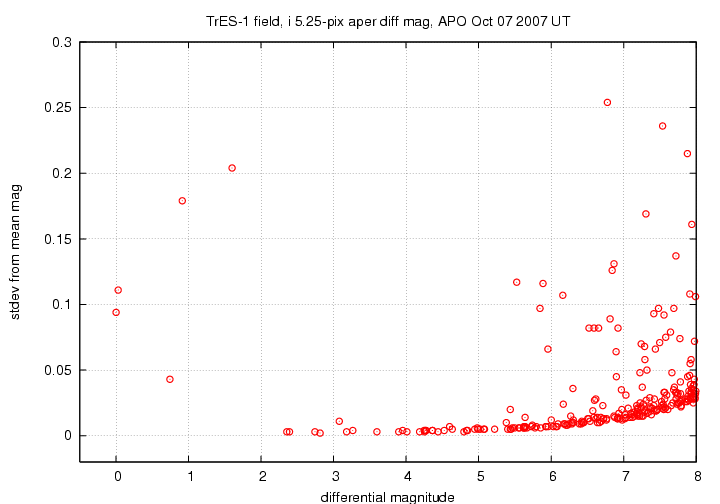
TrES-2 is the star at differential mag 3.08; note its slightly elevated scatter. The "noise floor" in these measurements is about 0.003 mag -- they are the best I've seen from the PT so far.
Below are the light curves for the target (green symbols) and four comparison stars in the field.
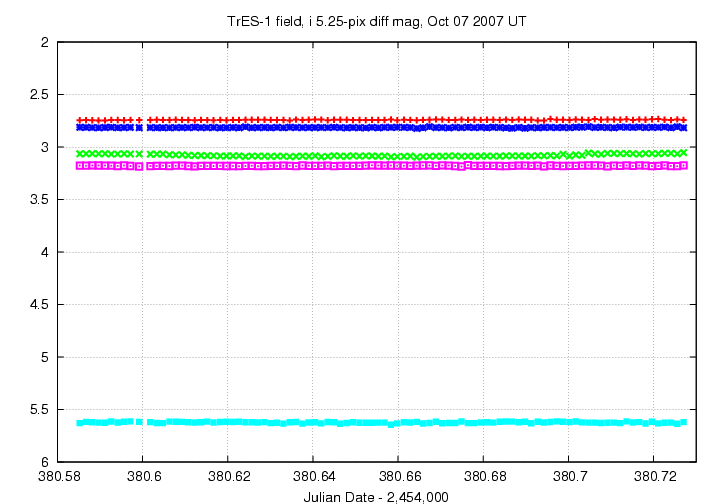
At this scale, you can't see the real variation in light due to the transit. The transit is obvious when we zoom in: in this closeup, I have shifted the data for star C to move them closer in magnitude to the target.
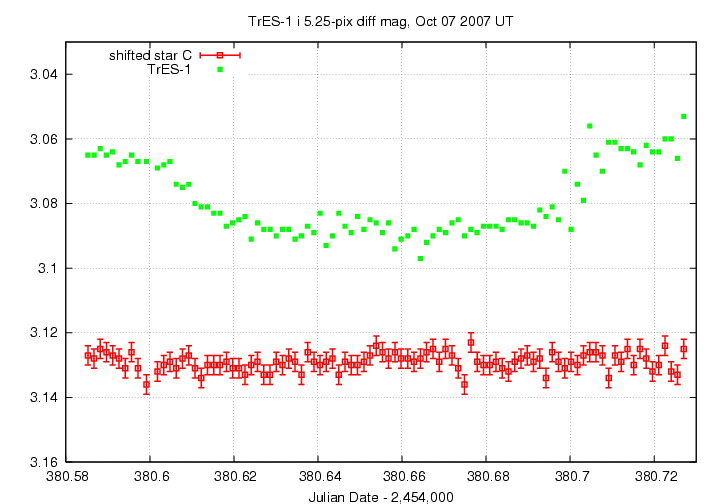
An ephemeris grabbed from transitsearch.org predicts for this night
----------------------------------------------------------------------------------------
Begin Transit Window PREDICTED CENTRAL TRANSIT End Transit Window
All Times UT
HJD Year M D H M
2454380.60 2007 10 7 2 26 2454380.66 2007 10 7 3 43 2454380.71 2007 10 7 5 0
----------------------------------------------------------------------------------------
The ingress of UT 2007 Oct 07 02:26:00 corresponds to JD 2,454,380.6014, which agrees pretty well with the poorly defined ingress in our light curve. The ephemeris predicts an end to the transit at UT 2007 Oct 07 05:00:00 = JD 2,454,380.7083; this again agrees pretty well with our value.
Note the asymmetry of this transit: the ingress is "smooth and gradual," while the egress looks "abrupt". I've seen this same asymmetry in a transit of TrES-1 recorded back in September, 2004 , and it appears in some measurements made by other observers, too. See, for example,
Hmmm. Could starspots be responsible?
You can grab the measurements for your own analysis. Below is a table with three flavors of time, plus the differential magnitude of TrES-2 and an estimate of the uncertainty in each measurement. I show the first few lines of the file to give you an idea of its format.
# Measurements of TrES-1 made with APO PT, Oct 7, 2007 UT. # Each exposure 45 seconds long in SDSS i-band; # Tabulated times are midexposure and accurate only to +/- 1 second (??). # 'mag' is a differential magnitude based on ensemble photometry # using a circular aperture of radius 5.25 arcseconds. # # UT day JD-2,450,000 HJD-2,450,000 mag uncert Oct07.58526 4380.58526 4380.58588 3.065 0.003 Oct07.58673 4380.58673 4380.58735 3.065 0.003 Oct07.58820 4380.58820 4380.58882 3.063 0.003Warning: the times in this datafile have a small systematic error. I assumed the FITS header time was the shutter open time, so added half the exposure time to it. The FITS header time is instead roughly the shutter CLOSING time. My calculated times are therefore later than correct by about the duration of one exposure.
Last modified 10/11/2007 by MWR.